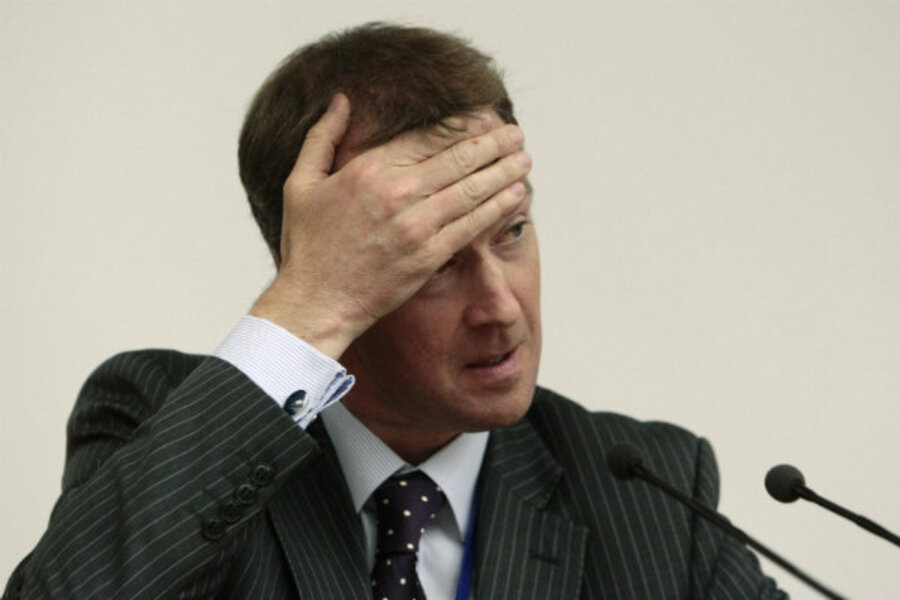A win-win road map for nuclear negotiations with Iran in Moscow
Loading...
| Tehran, Iran
The next round of negotiations between Iran and the P5+1 group – the five permanent members of the United Nations Security Council plus Germany – begins in Moscow today. The initial optimism after the first round of negotiations in Istanbul gave way to caution after the Baghdad negotiations in late May. The developments over the past two weeks do not, however, bode well for the negotiations.
Helga Maria Schmid, senior adviser to Catherine Ashton, the European Union foreign policy chief who leads the P5+1 team, has sent a letter to her Iranian counterpart, Ali Bagheri, indicating that P5+1 will take a hard line in Moscow.
In her letter to Mr. Bagheri, Ms. Schmid has stated that the P5+1 is willing only to discuss the proposal she put on the table in Baghdad. According to that proposal Iran must immediately cease uranium enrichment at 19.75 percent, in return for which the P5+1 will make minor concessions to Iran – providing Iran with spare parts for its old civilian aircraft bought from Europe and the United States, supplying some nuclear isotopes used in medical treatment, and cooperating with Iran on nuclear safety issues.
None of the tough sanctions already imposed on Iran, or about to be imposed on July 1, will be cancelled or even suspended. If the P5+1 insists on this hard line, the Moscow negotiations will be doomed.
The US and its allies must recognize that both sides, not just the P5+1, have their own constraints, as well as winning cards to play. In the US, the hawks and Israel lobby do not want any diplomatic solution to the nuclear standoff. The Senate has been busy passing one resolution after another, trying to make it impossible to negotiate with Iran. Hardliners within Iran’s security, intelligence, and military forces, particularly in the Islamic Revolutionary Guard Corps, also do not want to make any concession to the West.
And, while the sanctions imposed on Iran have worsened the economic plight of ordinary Iranians to the extent that the ruling elite cannot ignore it anymore, tougher confrontation with Iran in the absence of a diplomatic solution will push oil prices to much higher levels, greatly hurting the fragile European economies and the weak recovery in the US.
Moreover, with Iran’s stockpile of low-enriched uranium at 3.5 percent and 19.75 percent levels continuing to grow, the West’s anxiety over Iran’s military site at Parchin (southeast of Tehran) also growing, and the situation in Syria spiraling out of control, Iran does have some winning cards to play. No deal with Iran can be reached without a major concession by the US and its allies. If there is political will on both sides, the framework for a diplomatic solution and the road map to arrive at it are clear.
First, Iran must cease enrichment at 19.75 percent. In return, the EU must allow oil tankers that carry Iran’s oil to non-European nations to be insured by European companies. In addition, the sanctions on Iran’s central bank must at least be suspended.
Next, Iran must ship out its stockpile of 19.75 percent enriched uranium to Russia and France for conversion to fuel rods. This arrangement had been agreed upon in October 2009, but the agreement ultimately failed due to objections by both sides. In return, the P5+1 must guarantee supply of fuel, the same 19.75 percent enriched uranium converted to fuel rods, for the Tehran Research Reactor. Fuel rods cannot be used in making nuclear weapons.
Iran must then reactivate the provisions of the Additional Protocol of its Safeguards Agreement with the International Atomic Energy Agency (IAEA), which it carried out voluntarily from October 2003 to January 2006. That will give the IAEA intrusive authority to inspect any suspected site in Iran, including Parchin.
In addition, Iran must agree to adhere to modified Code 3.1 of its Safeguards Agreement, which obligates it to inform the IAEA about any new nuclear site as soon as the decision for constructing it is made. On the other hand, according to the present Code 3.1, Iran’s only obligation is to inform the IAEA about the existence of any new nuclear site 180 days prior to introducing any nuclear material into the site. Iran did adhere to the modified code until March 2007. In return, the P5+1 and, in particular, the EU must cancel oil sanctions.
Finally, Iran must agree to zero stockpile of 19.75 percent enriched uranium on its soil, implying that it must ship abroad the enriched uranium, both the current stockpile and in the future, and limit the number of enrichment sites and centrifuges to a mutually agreed upon number. In return, the P5+1 must reaffirm Iran’s fundamental right to produce low-enriched uranium and gradually lift its economic sanctions.
A few days ago, US Secretary of State Hillary Rodham Clinton rejected a role for Iran in the effort to resolve the crisis in Syria. That is utterly short-sighted. Iran is the most important backer of the Syrian regime. By giving Iran a seat at the table, the United States may achieve three major goals.
First, it would give Iran the respect that it has always craved as a major power in the Middle East. This would generate goodwill in Tehran. Second, without Iran’s help the crisis in Syria will most likely be transformed into a full-blown sectarian war that may spread throughout the Middle East, but with Iran at the table, a diplomatic solution may be possible. Third, the goodwill generated in Tehran will give Iran’s relative moderates the upper hand to end the nuclear standoff with the US diplomatically.
Such a framework and road map represent a win-win solution for both sides.
Muhammad Sahimi, a professor at the University of Southern California, analyzes Iran’s political developments and its nuclear program for the website PBS Frontline: Tehran Bureau.
© 2012 Global Viewpoint Network/Tribune Media Services. Hosted online by The Christian Science Monitor.







